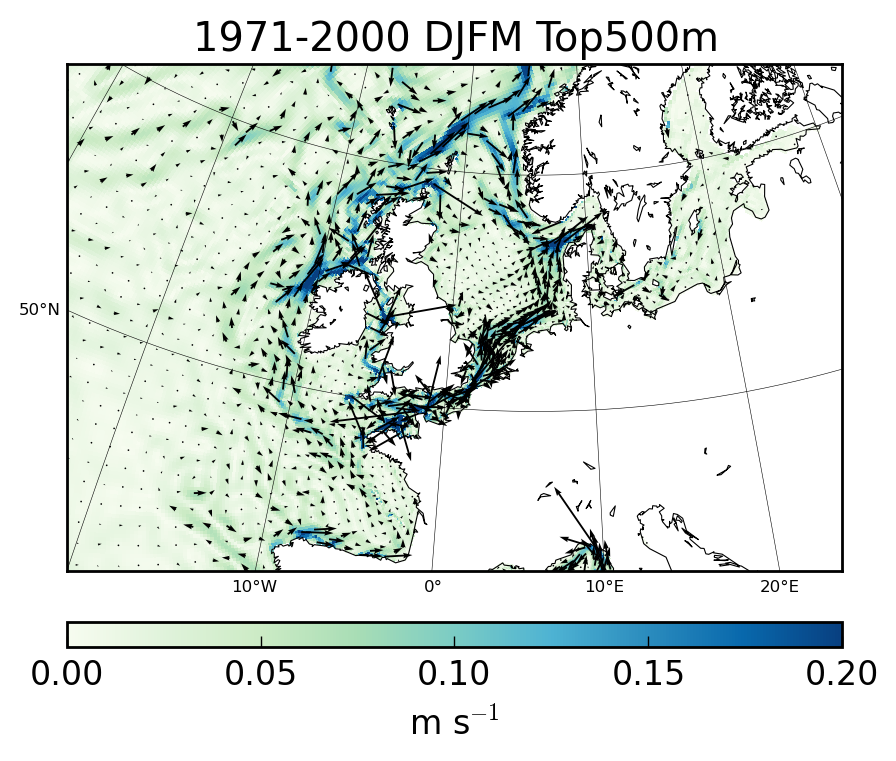Atlantic water masses are the most important source of oceanic nutrients for the seasonal plankton growth in the Northwest European Shelf Sea (NWES). Model simulations have shown that global warming induces a substantial reduction in the wintertime mixed layer depth of the Northeast Atlantic and hence a reduction in the nutrient concentration of Atlantic water masses flowing to the NWES. At a critical mixed layer depth, however, mixing processes at the shelf break mix up deeper nutrient-rich water masses and invoke a regime shift – a fundamental change – in the dynamics of the nutrient supply to the NWES. The nutrient-rich water masses spread from the shelf break to the interior of the NWES and fuel biological productivity there. This project investigates how meltwater discharge from the Greenland ice sheet to the North Atlantic influences the wintertime mixed layer depth and the related regime shift in the nutrient supply to the NWES.
Goals
- Quantification of uncertainties in the driving mechanisms and the intensity of the regime shift in the nutrient supply from the Northeast Atlantic to the NWES
- Investigation of the impact of the regime shift on the biological productivity of the NWES, in particular the North Sea
- Investigation of the influence of meltwater discharge from the Greenland ice sheet to the North Atlantic on the wintertime mixed layer depth and the dynamics of the nutrient transport to the NWES
Methods
- Future projections until the year 2150 for the greenhouse gas emission scenario RCP8.5 of the Intercontinental Panel of Climate Change (IPCC) with the Max-Planck-Institute Earth System Model MPI-ESM-LR
- Dynamical downscaling of the global simulations with the regionally coupled climate system model MPIOM/HAMOCC/REMO, providing a horizontal resolution of about 5 km at the continental coast of the NWES
- Model experiments with both model systems concerning various idealized melting rates of the Greenland ice sheet

PI
Uwe Mikolajewicz, Max-Planck-Institute for Meteorology, Hamburg
Team
Moritz Mathis, Helmholtz-Zentrum Geesthacht
Katharina Six, Max-Planck-Institute for Meteorology, Hamburg
